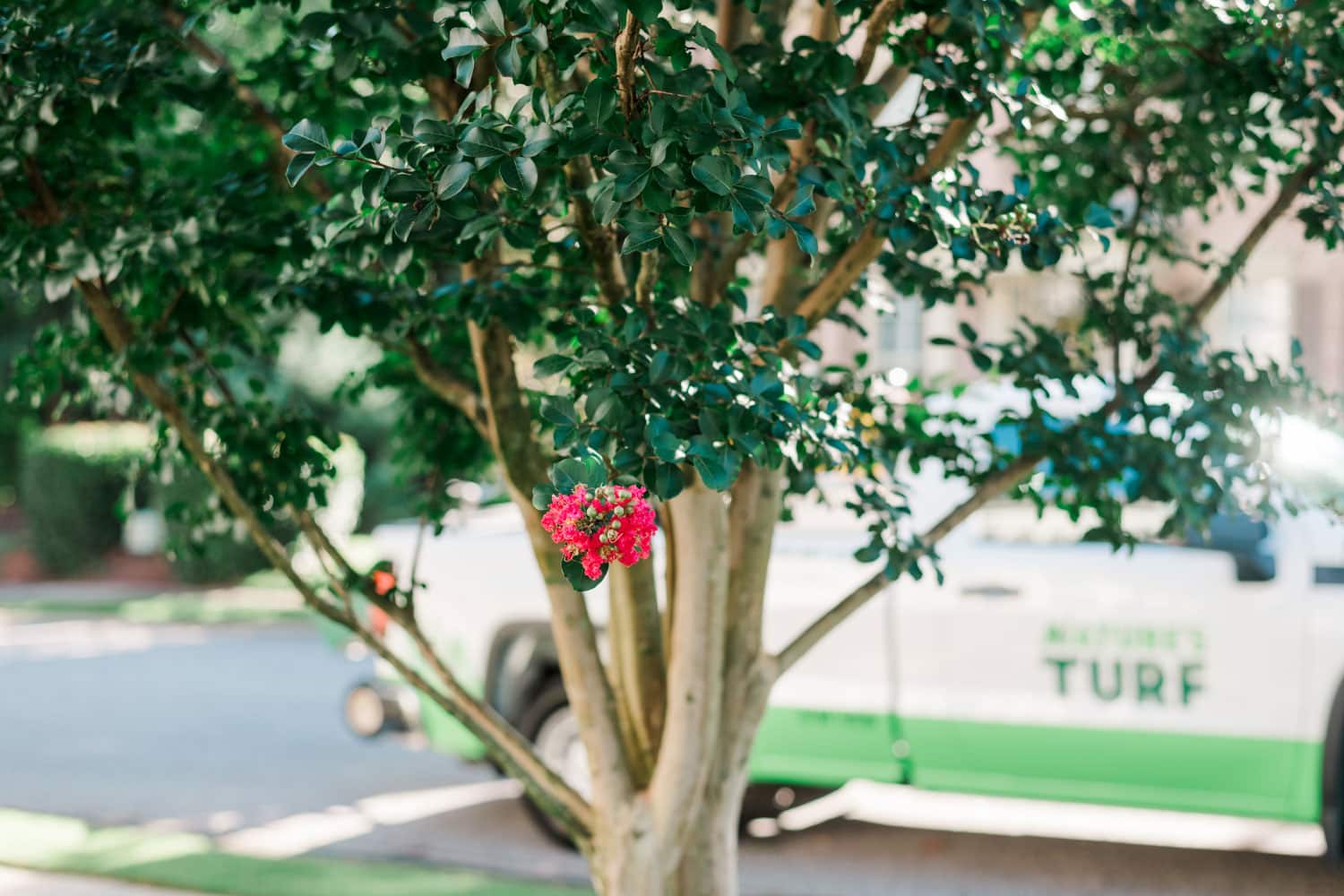Symptoms of insect infestations on plants can often be hard to diagnose if you’re unsure what you’re looking at. Small dots on leaves, odd webbing between branches, and sticky substances can be indicators of different insects, and professional eyes might be needed to identify exactly what the problem is. What isn’t difficult to identify, however, are toothpick-like protrusions from the trunks of your trees. They are caused by one insect: ambrosia beetles.
What Are Ambrosia Beetles?
Granulate ambrosia beetles are small scarab beetles notorious for causing those distinct projections. While ambrosia beetles share the same life cycle steps of other beetles, every stage except for the adult stage happens within the trunk of woody plants in a series of tunnels and chambers created by the female as she lays eggs. They find their host plants by picking up trace amounts of ethanol in the air excreted by plants under stress. This stress could be from young plants, newly planted or transplanted plants, potted plants, or plants sick from other afflictions. The symptomatic toothpick left on the outside of the tree by the ambrosia beetles is the wood displaced by the female as she creates this matrix of tunnels and prepares this area for harborage and egg laying.
In instances where many ambrosia beetles occupy a single host, the plant will begin to express symptoms akin to wilt or nutritional deficiencies. This is because plants use the wood in the middle, known as xylem, to move water and nutrients from the roots to the leaves. Since ambrosia beetles are boring through these tissues to create their tunnels, this pathway is compromised.
Why Are They So Difficult To Control?
Insect control products typically work in a couple of ways: they are either absorbed on contact or ingested by the pest. Unfortunately, these control methods don’t apply to ambrosia beetles. Contact insect control products don’t have exceptional residual times. Other than sheer luck, timing one of these products with an ambrosia swarm to protect the correct trees is nearly impossible. Once inside a host, successfully delivering a contact to the beetle is unlikely–and likely unsuccessful.
Systemic insecticides work wonders for most insects. Applied early in a season, they offer long-term effective control for insects that feed on any part of a plant, including insects that pierce a plant to feed. They don’t, however, control ambrosia beetles. The reason they are called ambrosia beetles is because of the ambrosia fungus they consume. An equally fascinating and frustrating habit of the ambrosia beetle is that they bring this fungus with them from the tunnels they hatched in and cultivate it in the tunnels they create in a new host plant. This means they never consume the wood. They simply displace it, creating that toothpick while never ingesting the systemic insecticide.
Researchers, while searching for control methods, have also looked at the possibility of injuring the ambrosia fungus the beetles use for sustenance. This has also proven ineffective. The fungus simply uses the humidity in the tunnels to proliferate, but it never actually becomes parasitic to the host. Since the fungus is confined to the tunnel, delivering a fungicide directly to it is impossible, and systemics within the host won’t affect it since it isn’t dependent on the host plant.
How Do I Avoid Ambrosia Beetles?
The best defense is a good offense; maximize the plant health in your yard. Granulate ambrosia beetles attack plants that are ill, generally avoiding the healthy plants around them. Nature’s Turf’s Tree and Shrub Care program is designed to meet the needs of ornamental woody plants and dissuade other pest damages in our Atlanta-area landscapes. Combined with proper planting techniques and good cultural practices such as watering and pruning, the goal is to maximize plant health.
All pests need three things: the presence of the pest itself, a viable host, and environmental conditions conducive for development. By maintaining healthy trees and shrubs, we do our best to remove the viable host. In the event a plant in your landscape becomes infested, the best method is likely to remove and burn that plant material.
If you see these symptoms or have questions regarding any landscape stressors, please give us a call at (678) 831-6343 or send us an email. Our team of support professionals is glad to discuss causes and solutions.
Important Takeaways:
- Granulate ambrosia beetles are small scarab beetles notorious for causing toothpick-like projections from the sides of ornamental trees and shrubs.
- Insect control products typically work in a couple of ways. They are either absorbed on contact or ingested by the pest. Unfortunately, these control methods don’t apply to ambrosia beetles.
- The best defense is a good offense; maximize the plant health in your yard. Granulate ambrosia beetles attack plants that are ill, generally avoiding the healthy plants around them.








